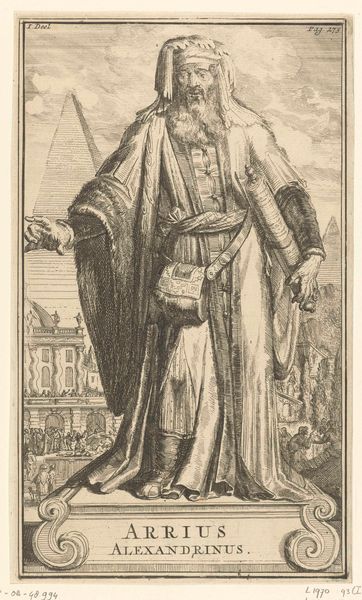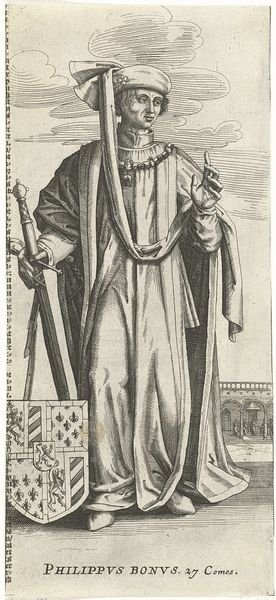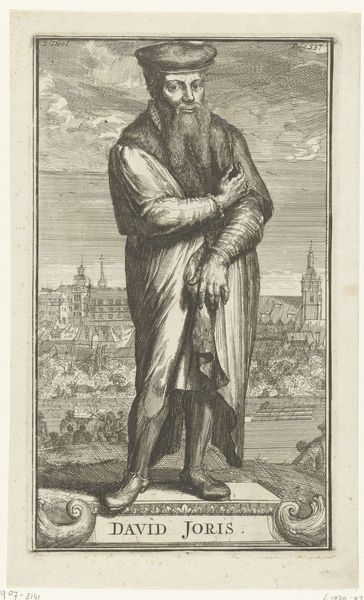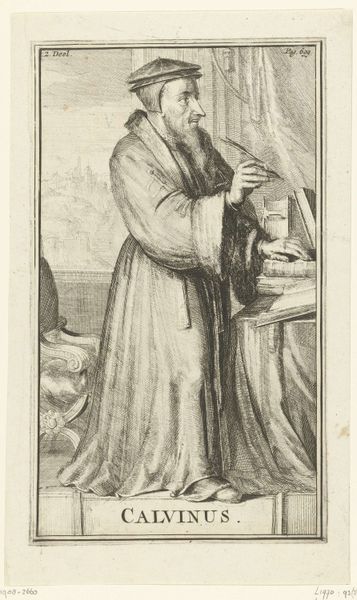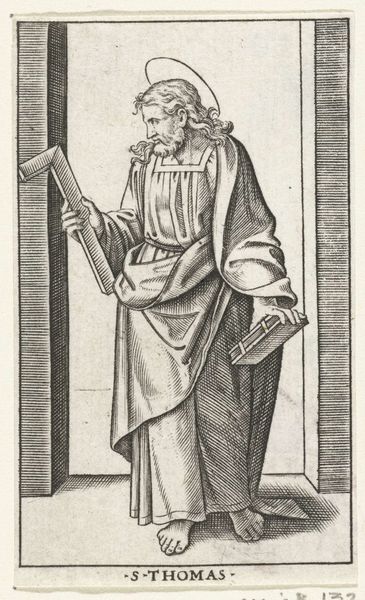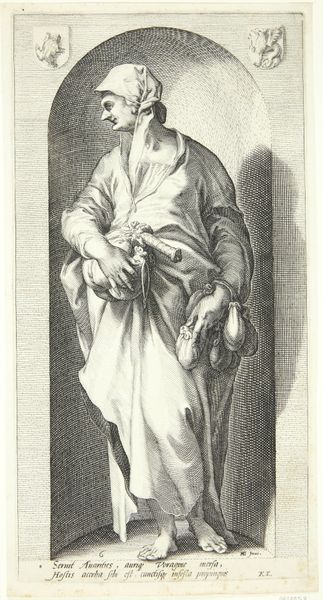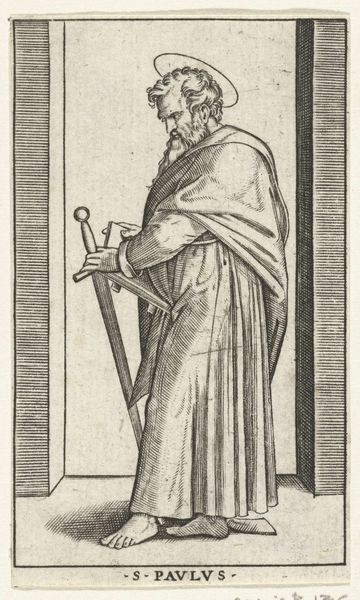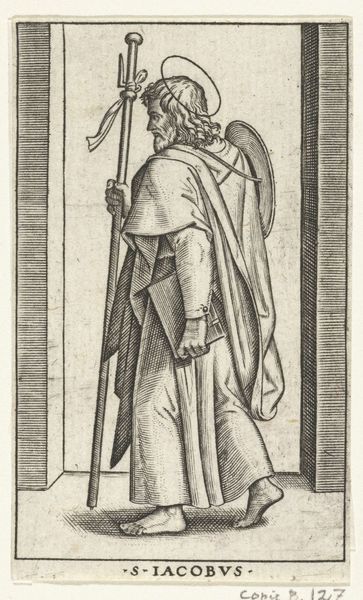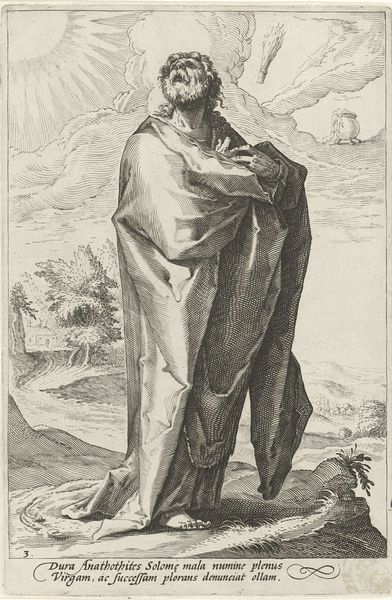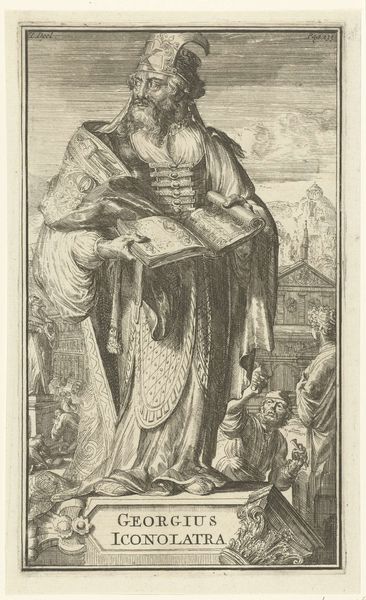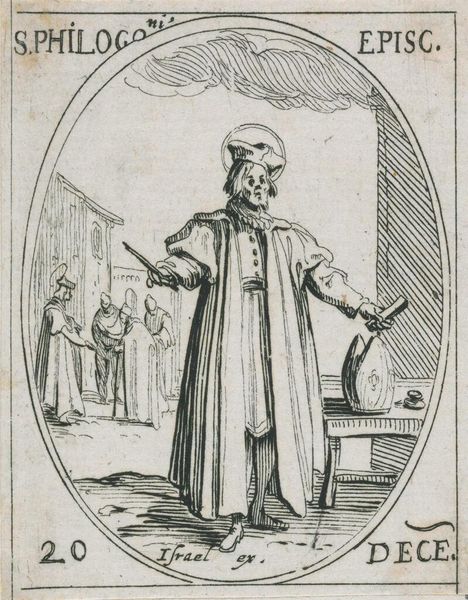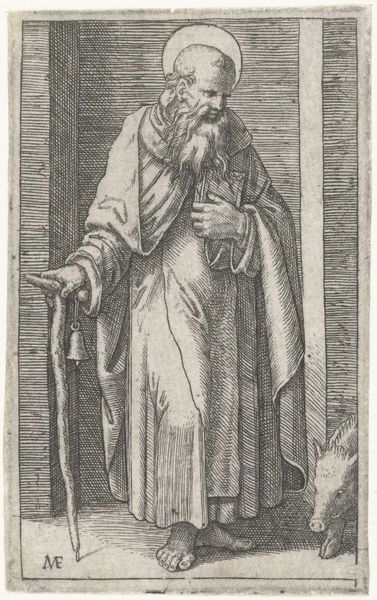
print, engraving
#
portrait
#
baroque
# print
#
pen illustration
#
old engraving style
#
figuration
#
line
#
history-painting
#
engraving
Dimensions: height 262 mm, width 152 mm
Copyright: Rijks Museum: Open Domain
This is Romeyn de Hooghe's portrait of Melanchton, made using etching. Here, we can see how the incised lines create texture and detail. De Hooghe skillfully uses the etching technique to capture the rich fabrics of Melanchton’s attire. Look closely, and you’ll notice the intricate cross-hatching that defines the folds and shadows. This wasn’t a quick process; it required careful planning and execution. The lines, etched into the metal plate with acid, dictate the final image. The labor-intensive nature of printmaking in the 17th century meant each print was a product of skilled craftsmanship. The lines of the print aren't just about aesthetics. They speak to the broader context of production, the artist's skill, and the value placed on handcrafted imagery. By appreciating the materials and processes behind this print, we gain a richer understanding of its cultural and social significance, and its role in a world before mechanical reproduction.
Comments
No comments
Be the first to comment and join the conversation on the ultimate creative platform.
